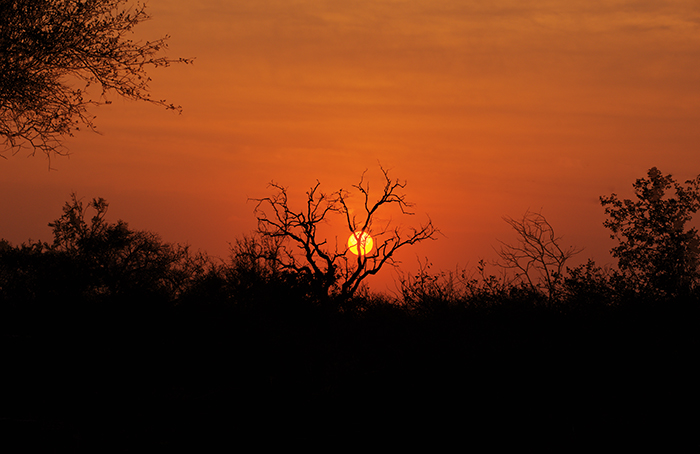
photo 1
After spending the night in a hotel in Johannesburg, the next day we were on our way to the Simbavati game reserve in the north-east area of South Africa near Mozambique. We flew from Johannesburg to Hoedspruit airport, which is about 452 kms away, where we and other guests were met by a driver with a van. He took us to the game reserve.
On the way, we caught our first glimpses of wild animals: giraffes, zebras, impalas, and many beautiful birds, and a number of very tall termite mounds.
We stayed there 3 nights, and starting in the afternoon of the day we arrived and over the next two days, were taken by jeep through the game reserve. We got up at 5:30 am for the morning jeep ride (safari), and then went out again at about 5 pm at night. Each time we were out for 2-1/2 to 3 hours. These are the times when the animals are most active. Because of those early mornng and late afternoon times of the day, you will see that all of the photos have an orange or pink tinge from the color of the daylight.
During the safari, we were forbidden to stand up or jump out of the jeep to take pictures. The guide explained that the animals do not recognize us in the vehicle as humans when we are in the jeep. To the animals, it looks like one giant animal that would not hurt them. They would see humans on foot as either food or as a threat and that is why we could not walk outside of the jeep unless we were in a clearing with no animals around.
The really nice thing about this particular game reserve is they have a large wooden veranda for sitting and meals that overlooks a dried river bed with a large watering hole just a few feet from the veranda edge. You can sit, eat a meal, and watch migrating animals such as elephants, hyeneas, baboons, giraffe, antelopes, birds, water buffalo, and so on. Imagine eating dinner on a dimly lit veranda when you hear crackling in the bush on the other side. Then, a very large hyena appears and moves back into the bush. After a short while, two elephants emerge and head down to the water to drink. They appear out of the darkness as gray boulders, and as they come closer to the water, the details of their shapes become clear.
Enjoy this beautiful South African sunset in the bush from one of our evening safaris:

photo 1
One day we had some wild animal visitors to the shrubbery just outside our room only a few feet from our roofed porch with an open front. Our room was a large tent with a bathroom, bedroom, and balcony. It was really a room with tent-like walls and ceiling and not something you would take down and travel with. Here are pictures of the visitors we had one afternoon who dropped by to munch on the shrubbery growing just a few feet from our porch:
Young elephant:
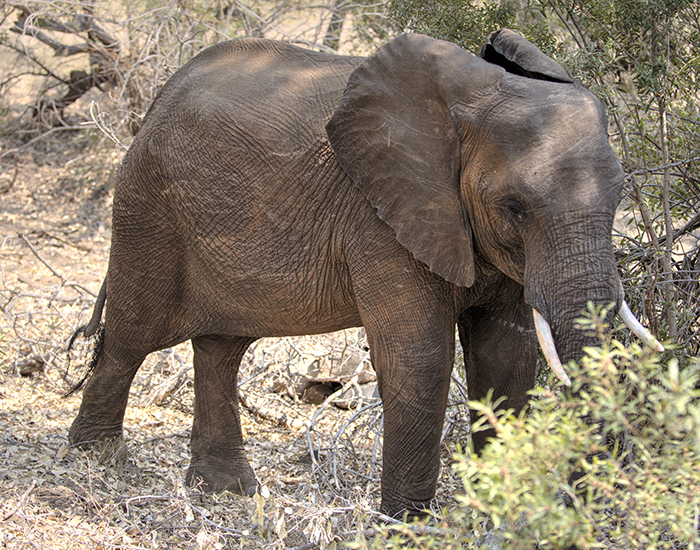
photo 2
Male Nyala:
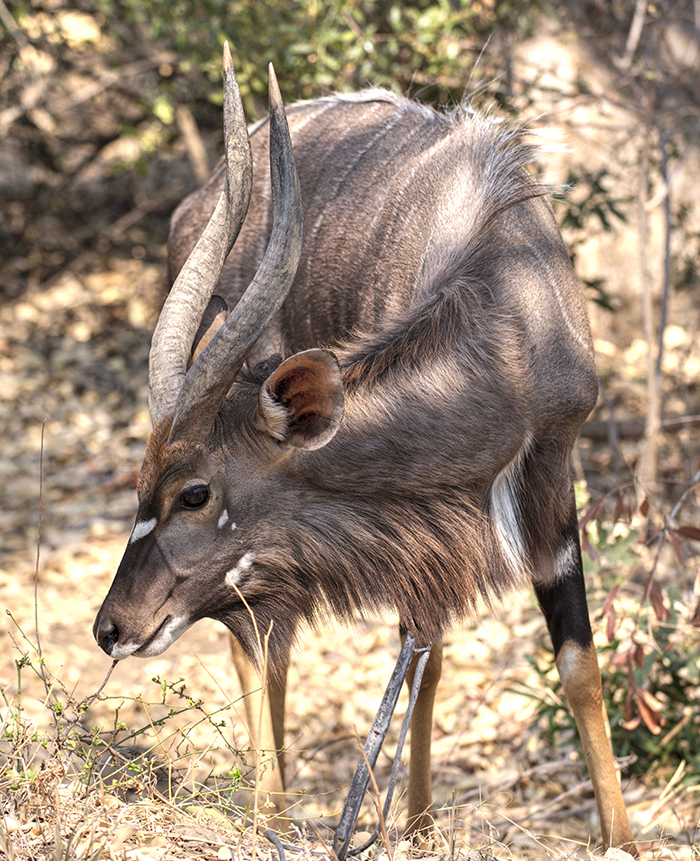
photo 3
We had a guide, a tracker, and a jeep that holds up to 9 tourists in tiered seats arranged in three rows. Most days we had about 6 tourists including us. At the end of each ride we would stop in the bush and the guide and tracker offered us tea, coffee, and snacks. Our guide was Nicole who is the first, and so far, only certified woman guide in South Africa. The tracker sits in a little seat on the front-left side of the jeep (opposite side to where the driver sits). I never saw the trackers with seat belts, and can't imagine how they stay in their seats as we cover rocky offroad terrain to find the animals.
The following picture is me in the hoody, other tourists, and Nicole in front of the jeep (with the long, dark hair.
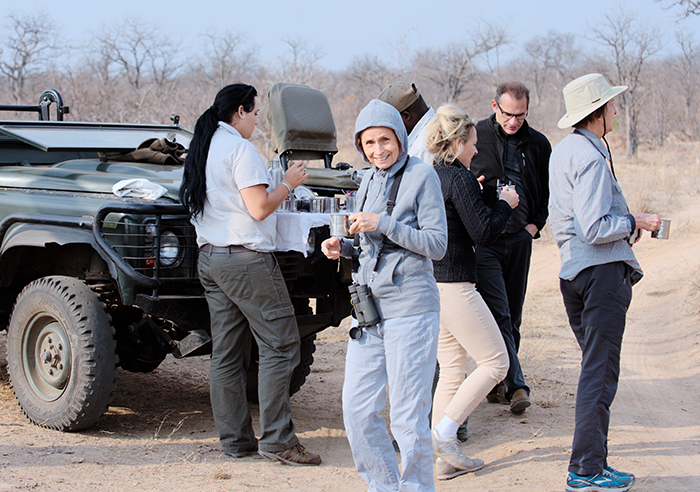
photo 4
Here's another shot that shows our tracker, Daniel, standing next to Nicole.
![]()
photo 5
Termite mounds are everywhere and also provide a convenient place to use the "bush bathroom" unseen:
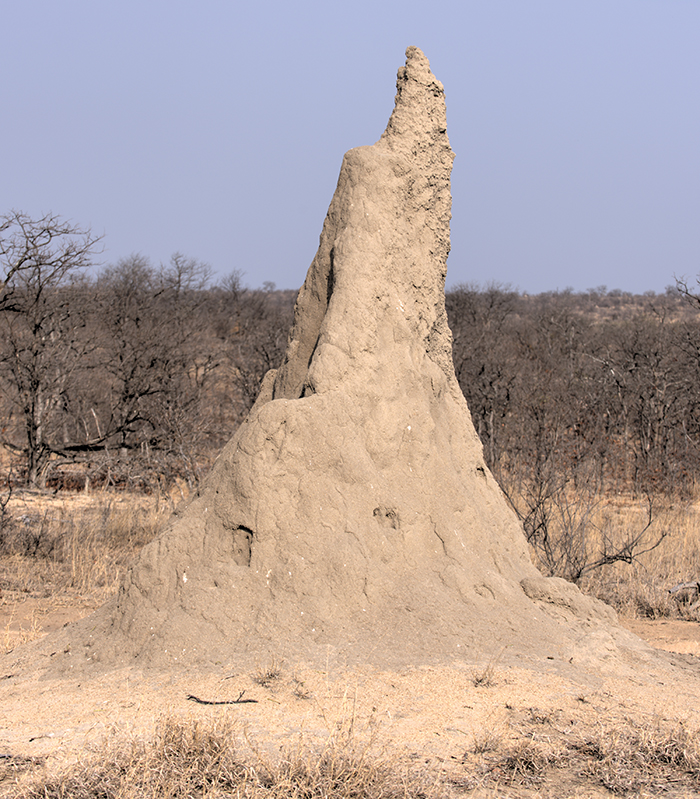
photo 6
Another termite mound:
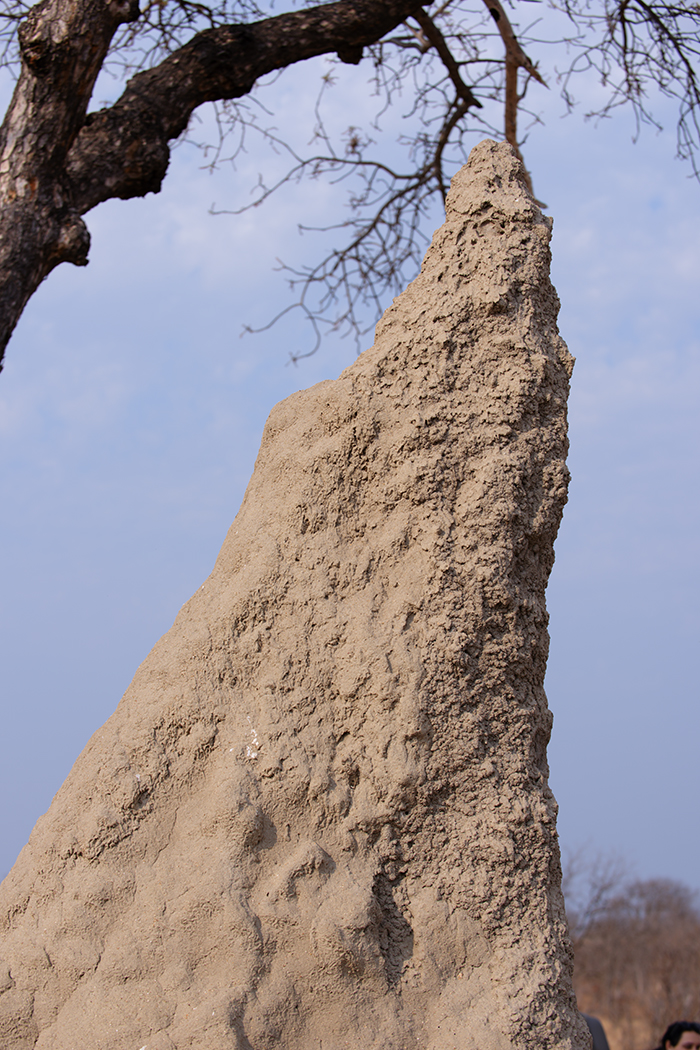
photo 7
Birds are everywhere and the reserve has many different kinds. We saw the large black and white saddlebird, storks with orange beaks, the wing-necked stork, brown-hooded kingfisher with a blue body and a red beak, the black and white kingfisher, brown Eqyptian goose, three-banded glover, green woodhooper, and many gray go-away birds that send alarms to other animals that danger is nearby with their call that sounds like they are loudly saying "go away!" to all nearby animals.
We also saw this Southern Yellow-Billed Hornbill.
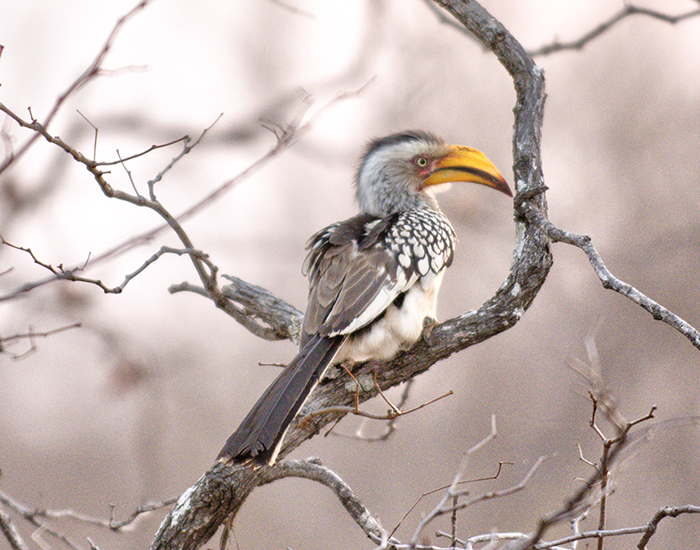
photo 8
We also saw this Saddle-billed stork bird.
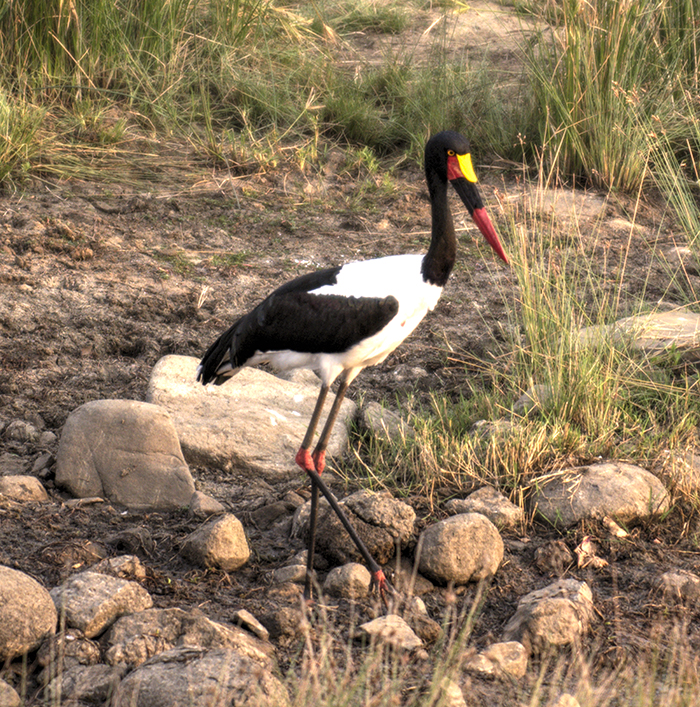
photo 9
This Lilac-Breasted Roller:
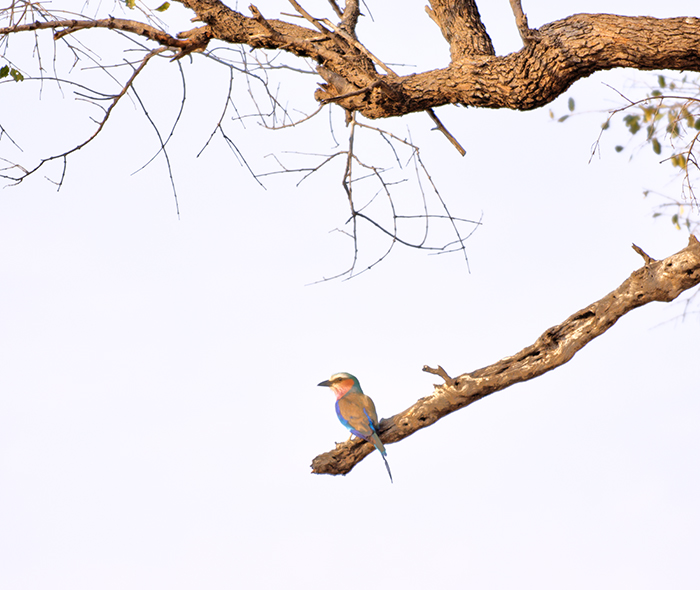
photo 10
And this pair of Verreaux's Eagle Owls:
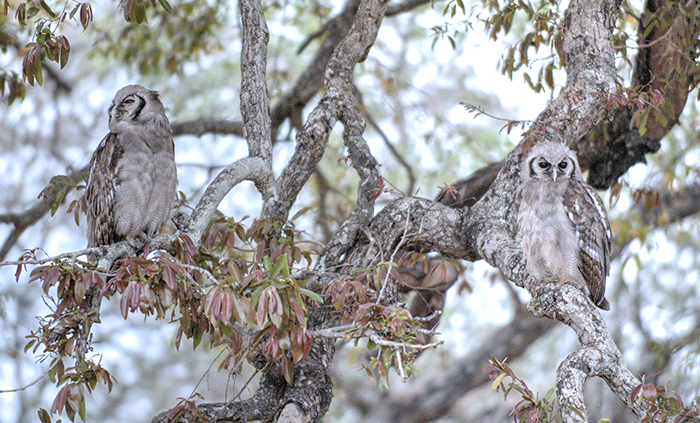
photo 11
The impala are seen everywhere. They are usually in large groups. Here is one I saw looking at us:
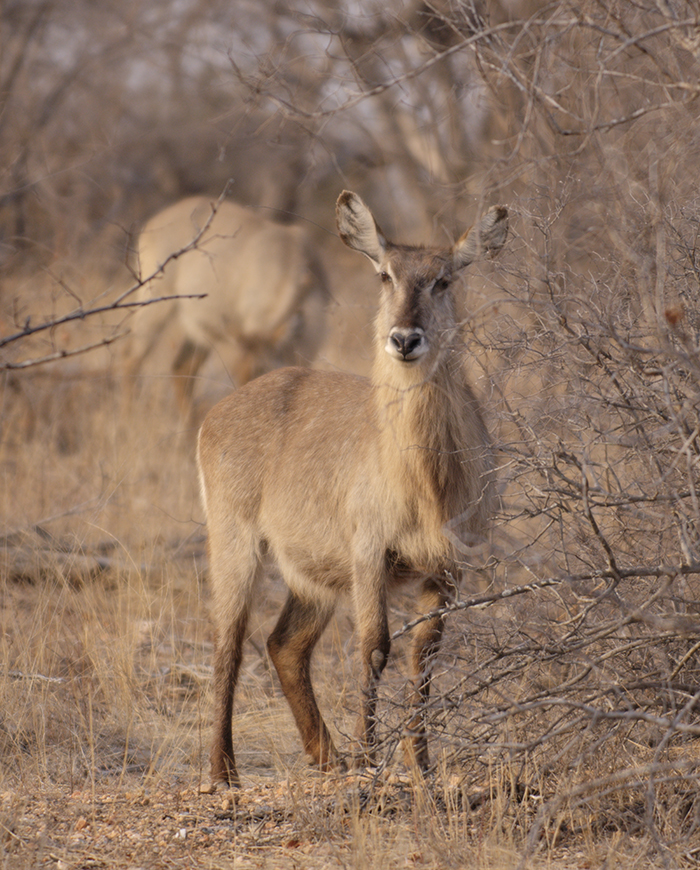
photo 12
On one of our jeep rides, we saw these beautiful zebras grazing in the bush. They all have a different stripe pattern, which makes it possible to identify them.
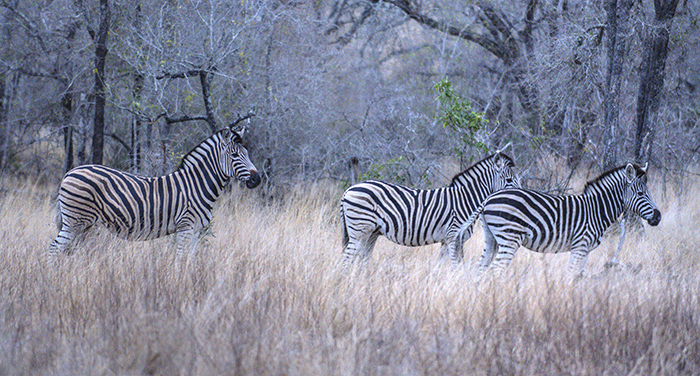
photo 13
We also saw a number of giraffes with their necks and heads extending above the trees and brush. This picture is of a young giraffe:
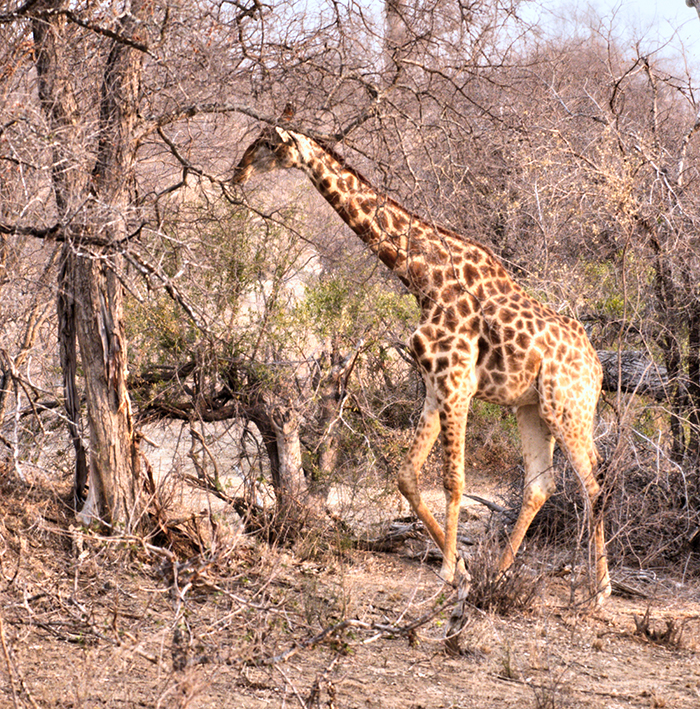
photo 14
This one is a Vervid monkey peering at something. These monkeys are also called blue monkeys.
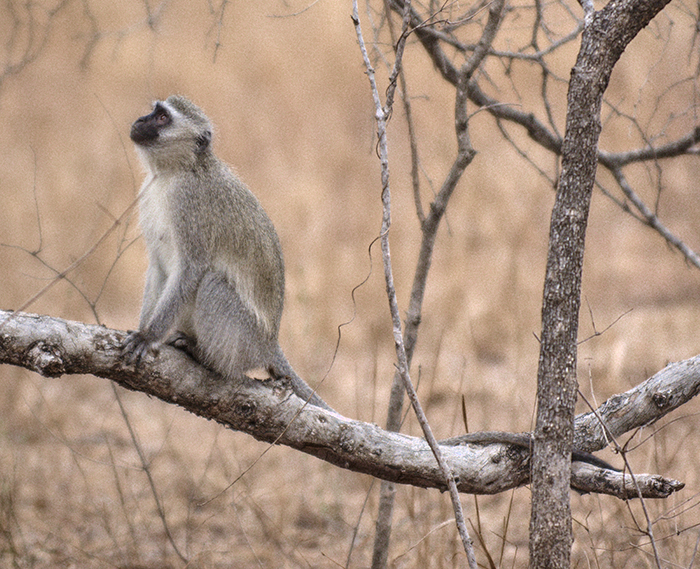
photo 15
And then there are elephants everywhere. African elephants eat brush all day long. They use their tusks to eat by grabbing the foliage from the trees. They also use their tusks to fight. The matriarch kicks the bull elephants out after they get big, so you end up seeing a lot of female elephants and babies together without the males - unless they are young males.
We worked with Kensington Tours to set up our trip and we timed it so that we would be there when there would be a lot of baby animals. Here are some elephant photos of adult and baby elephants:
A male elephant eating:
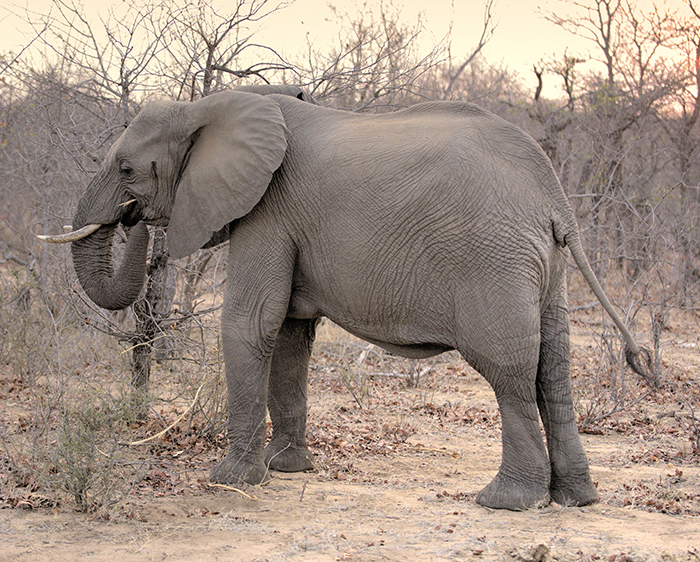
photo 16
Another male elephant:
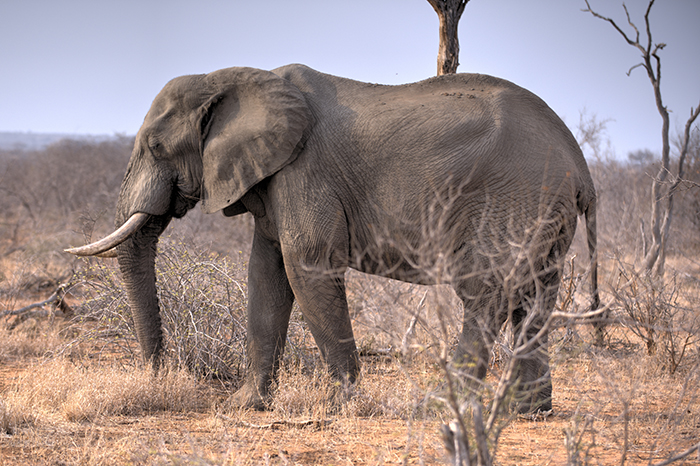
photo 17
A baby elephant eating:
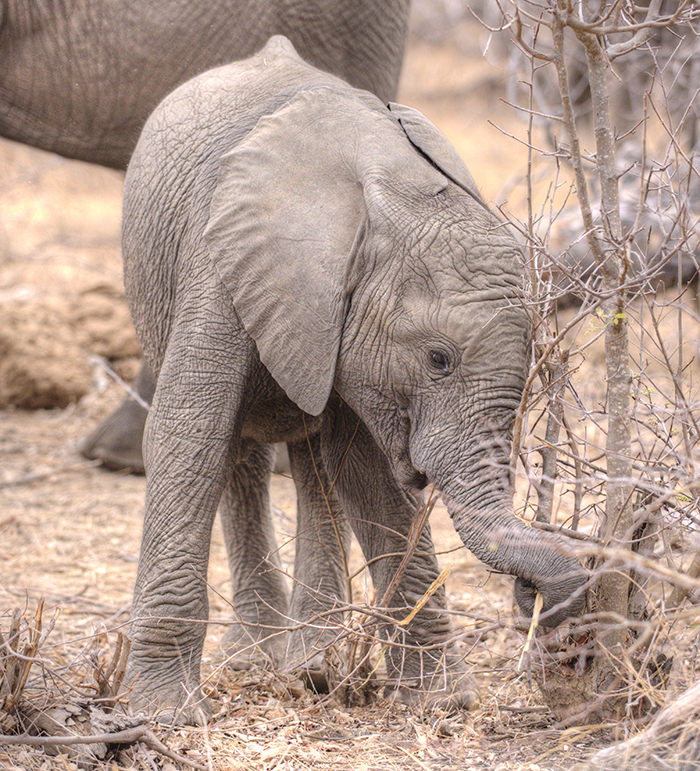
photo 18
Baby elephant following father:
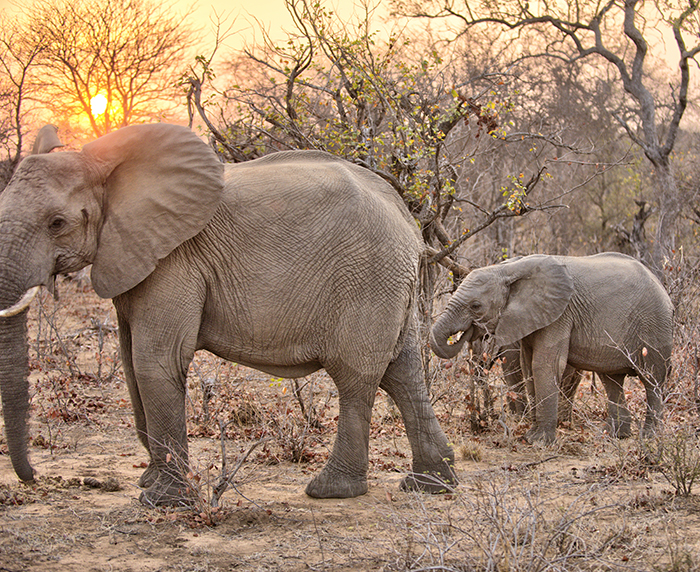
photo 19
The baby elephant and mother:
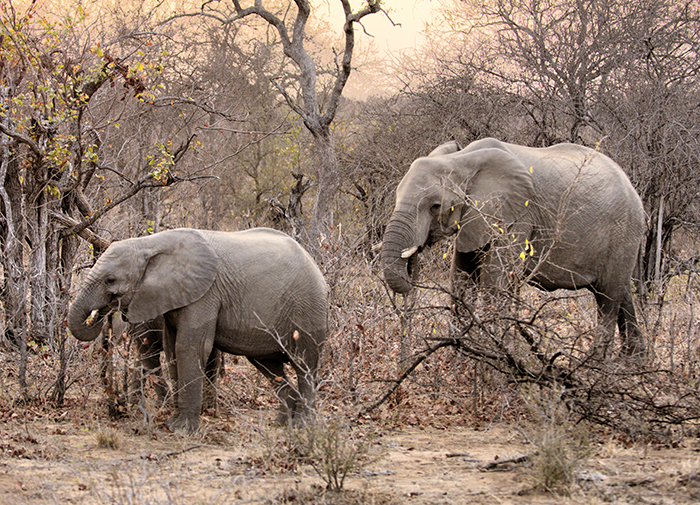
photo 20
You might have heard of the white rhino, which is actually not even white. The name was originally wide rhino referring to the rhino with a wide mouth. Somehow over the years wide turned into white, which is certainly confusing for many people especially when they see one and it looks pretty much like any rhino because they are all about the same color.
This is the wide-mouthed ("white") rhino:
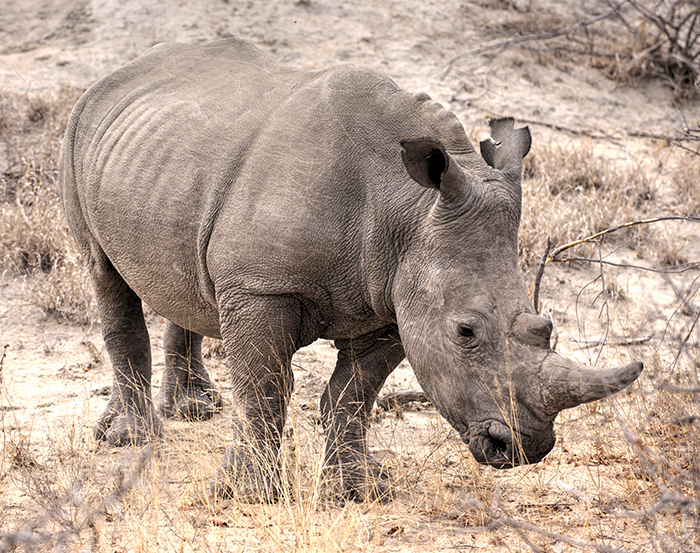
photo 21
This is a rhino from the rear:
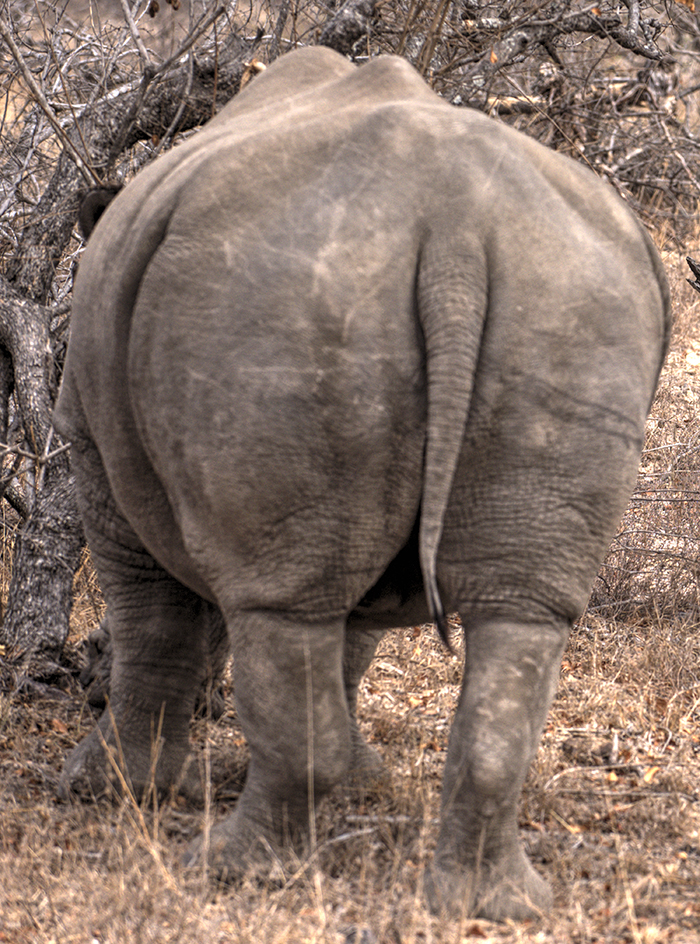
photo 22
We love cats of all kinds, and we saw a number of cats in the wild going about their daily business quite oblivious to all of us tourists watching them in awe.
A leopard eating:
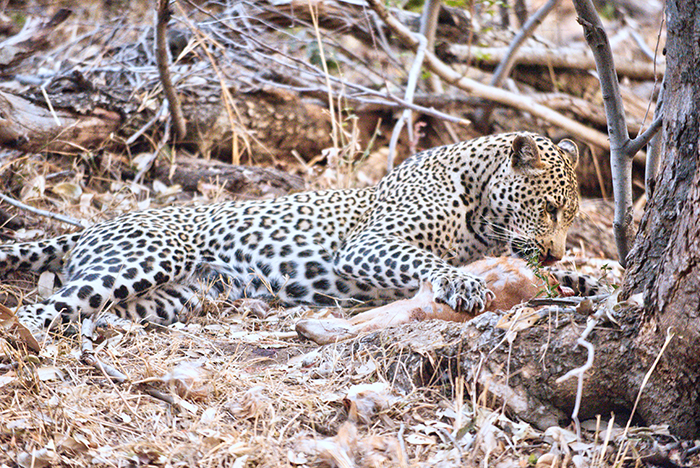
photo 23
A male lion resting -- cats are really good at resting and sleeping:
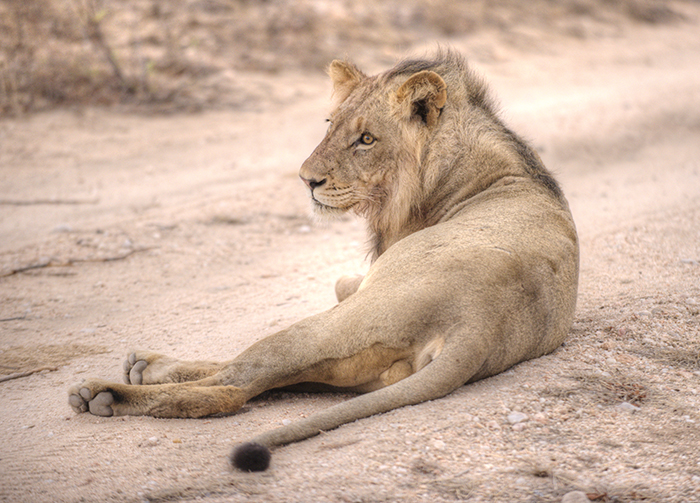
photo 24
A young male lion looking for something to eat:
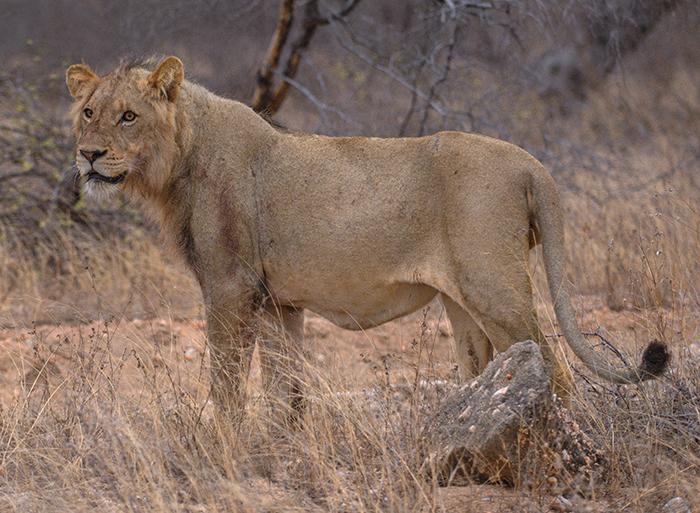
photo 25
A young male lion scanning the distance:
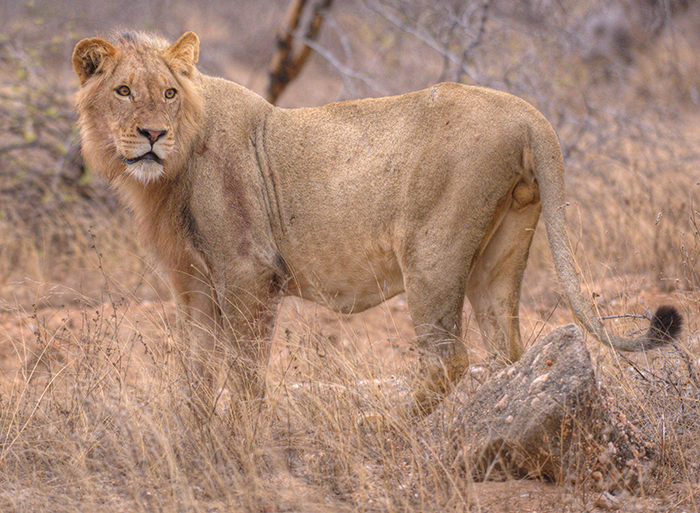
photo 26
A young male lion ready to hunt:
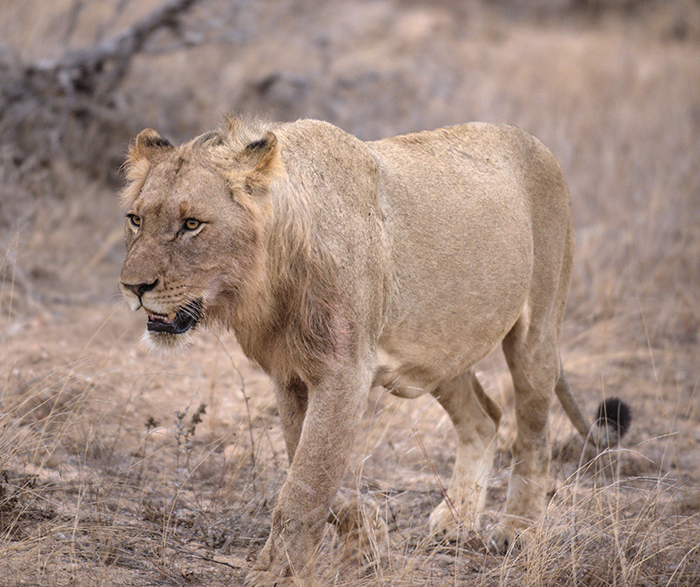
photo 27
Continue to South Africa Sabi Sands page
or go back to the South Africa and Madagascar contents page
© 2017 Jeffrey Pawlan